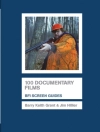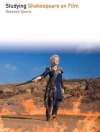This book explores how to understand the international appeal of Danish television drama and Nordic Noir in the 2010s. Focusing on production and distribution as well as the series and their reception, the chapters analyse how this small nation production culture was suddenly regarded as an example of best practice in the international television industries, and how the distribution and branding of particular series – such as Forbrydelsen/The Killing, Borgen and Bron/The Bridge – led to dedicated audiences around the world. Discussing issues such as cultural proximity, transnationalism and glocalisation, the chapters investigate the complex interplays between the national and international in the television industries and the global lessons learned from the way in which screen ideas, production frameworks and public service content from Denmark suddenly managed to travel widely. The book builds on extensive empirical material and case studies conducted as part of the transnational research project ‘What Makes Danish Television Drama Travel?’
Tabella dei contenuti
Introduction.- 1. Anne Marit Waade, Eva Novrup Redvall and Pia Majbritt Jensen: Lessons Learned from Danish Television Drama: From Screen Ideas to Value Creation in Production, Distribution and Reception.- Part 1: Global/Public Values in Danish Television Drama.- 2. Anne M. Waade: The Value Chain of Danish Television Drama Series; transnational and Cross-sectorial Perspectives.- 3. Gunhild Agger: The Golden Age: Danish Public Service Drama Series 1995–2015.- 4. Janet Mc Cabe: Why the World Fell for Borgen (2010-2013): Debating Democracy and the Role of Public Service Television as a (Trans)National Public Sphere in the Age of Globalisation.- 5. Sue Turnbull and Marion Mc Cutcheon: Valuing the Global Impact of Danish TV drama series: An Australian case study.- Part 2: Small Nation Perspectives: Producing Danish Television Drama.- 6. Jakob Isak Nielsen: Stylish drama series – overt style in Danish drama series?.- 7. Kim Toft Hansen: Glocal Perspectives on Danish Television Drama.- 8. Eva Novrup Redvall: How do you educate the television writers and producers of tomorrow? A case study of one small nation approach to training television drama talent.- 9. Ruth Mc Elroy: Bilingual crime drama as affinitive transnationalism or linguistic deracination? What Wales learned from Danish television drama. Vilde Schanke Sundet: Drama as Flagship Productions: Small Nation Television and Digital Distribution.- Part 3: Global Lessons: Distribution and Reception of Danish Television Drama.- 10. Pia M. Jensen & Ushma C. Jacobsen: Crowding proximities theory: Considering other proximities on the transnational travel of Danish television drama.- 11. Susanne Eichner & Andrea Esser: Distribution and consumption of Danish TV drama series in Germany and the UK.- 12. Matt Hills: Emotional Realism, Fandom and Saga’s End: Bron/Broen’s User-led and Broadcaster-led Transnationalisms.- 13. Lynge S. Gemzøe: Remaking Danish Television Drama in the US.- 14. Pia Majbritt Jensen: Whose success, really? Critical perspectives on whom, what and where stand to benefit from the success of Danish TV drama.
Circa l’autore
Anne Marit Waade is Professor in Global Media Industries at University of Aarhus, Denmark. She is the author of Locating Nordic Noir (2017) and Wallanderland (2013) and other publications on television drama and crime series, media tourism, creative industry and place branding. Her research has been supported by funding bodies such as The Danish Innovation Fund, H2020, AHRC and DDF.
Eva Novrup Redvall is Associate Professor at the University of Copenhagen, Denmark, where she heads the Section for Film Studies and Creative Media Industries. She is the author of Writing and Producing Television Drama in Denmark: From The Kingdom to The Killing and many other publications on Nordic film and television, screenwriting and production.
Pia Majbritt Jensen is Associate Professor in Media Studies at Aarhus University, Denmark, and Co-Director of The Centre for Transnational Media Research. An audience, industry and production scholar, her current research interests and projects include crime narratives in television, film and literature and the production and reception of audiovisual fiction and cross-media storyworlds for children and young people.












